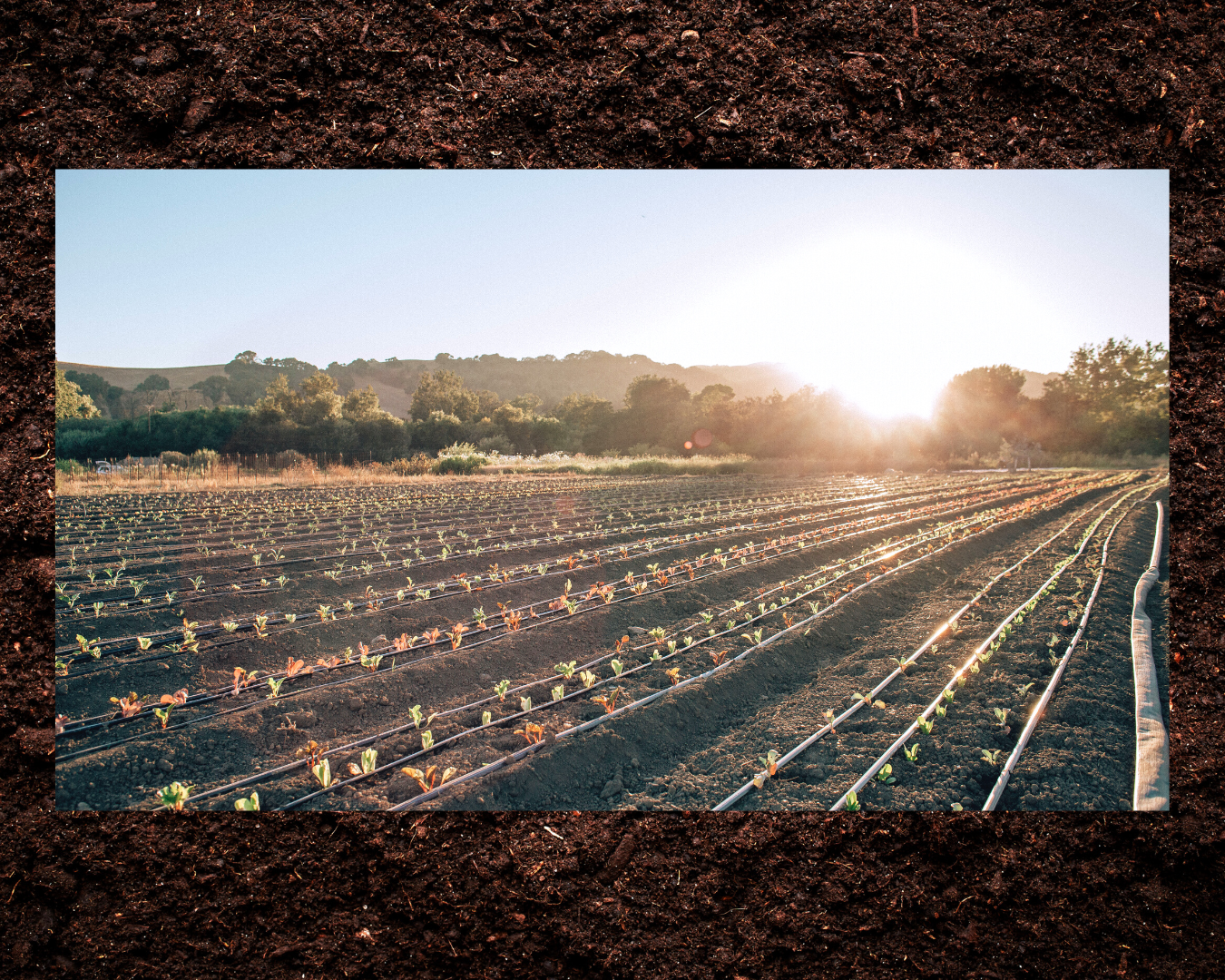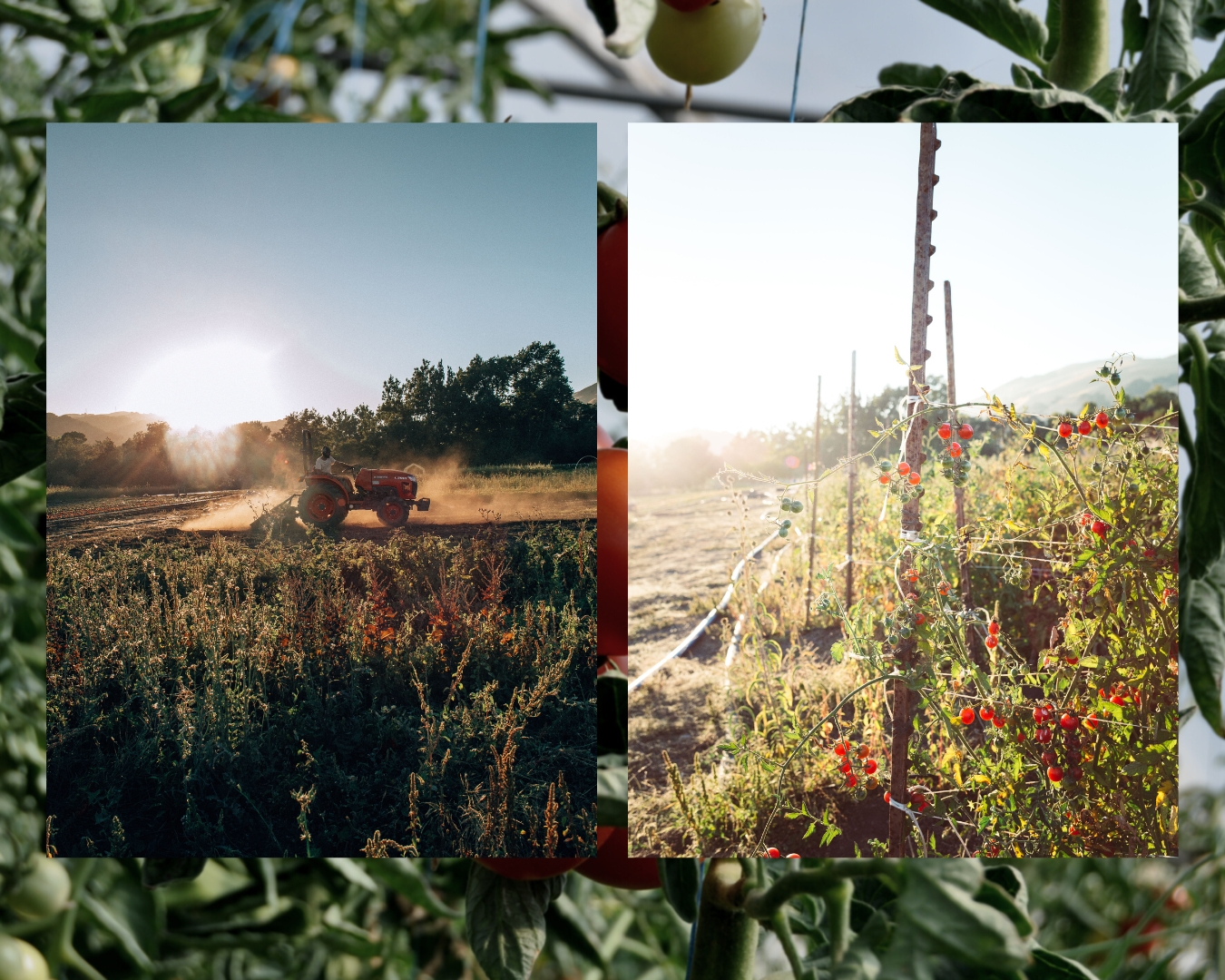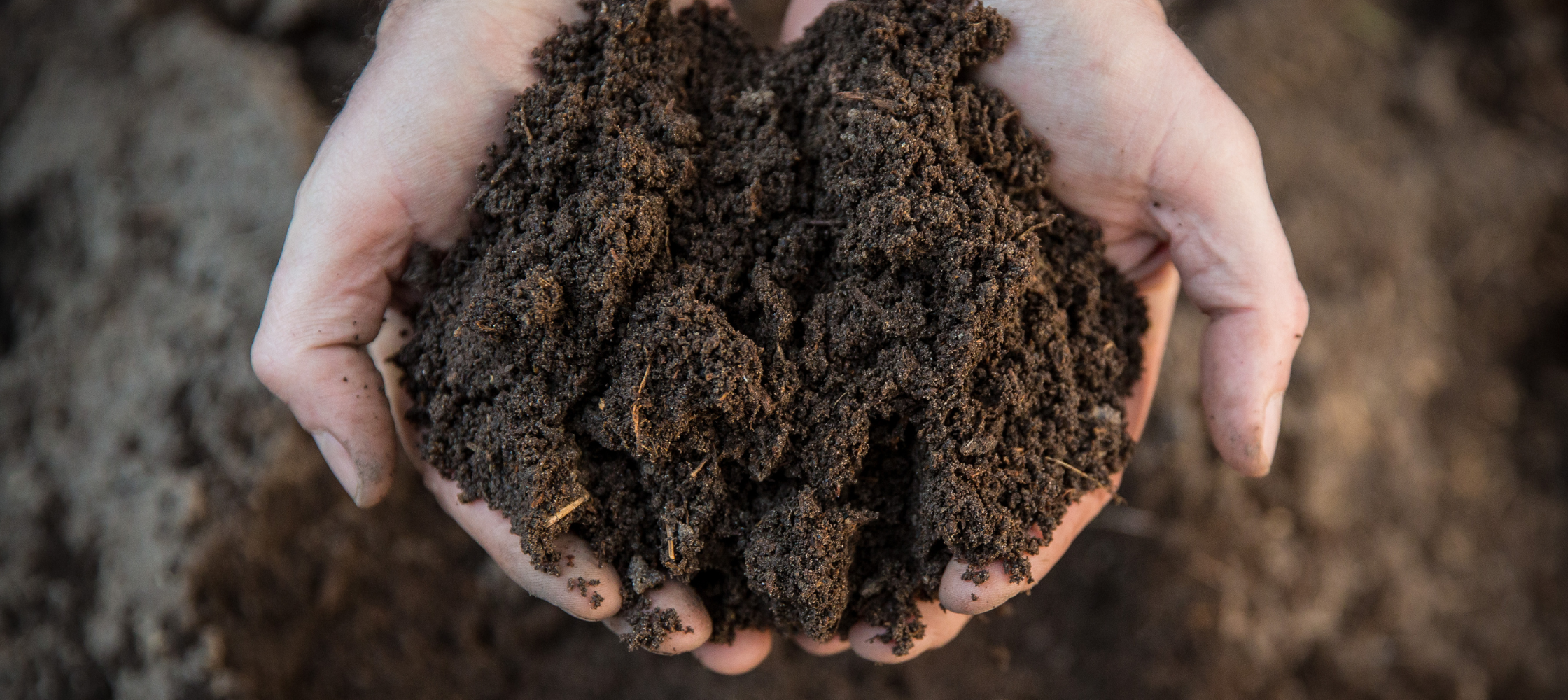As the global population is expected to reach 9.7 billion by 2050, the demand for food and water will inevitably rise, necessitating an increase in food production. The extensive use of mineral fertilizers, agrochemicals, and water in intensive farming practices has resulted in land degradation, environmental pollution, and the exhaustion of natural resources. To address these challenges, sustainable agricultural practices focused on minimizing environmental impact and reducing the residual effects of chemicals in the food chain are essential. One promising approach is leveraging the potential of soil microbiota in agriculture to create a more sustainable and healthy food system.
Soil Microbiota: A Valuable Resource
The relationship between plants and their environment is a complex and intricate one, and scientists have been studying it for many years. It encompasses a wide range of ecological niches, including the rhizosphere (the soil surrounding the plant's roots), surface tissues like the rhizoplane (the interface between the root and soil) and phylloplane (the surface of leaves), and inner tissues known as the endosphere.
Within these niches, plants interact with a diverse array of microorganisms, including bacteria, fungi, and viruses. These microorganisms can engage in a variety of interactions with plants, ranging from beneficial to neutral and harmful.
The beneficial microorganisms, known collectively as plant growth-promoting microorganisms (PGPMs), offer numerous advantages to plants. They can help to enhance nutrient uptake by solubilizing nutrients such as phosphorus and fixing atmospheric nitrogen, making it available to the plant. They can also help plants to better tolerate environmental stresses like drought, salinity, and extreme temperatures. Additionally, PGPMs can protect plants from pathogens by producing antimicrobial compounds, inducing systemic resistance, or competing for resources with harmful microorganisms.
PGPMs have been found to improve plant health and productivity, which has led to their use in sustainable agriculture practices. By reducing the need for chemical inputs like fertilizers and pesticides, PGPMs can help to minimize the environmental impact of agriculture while maintaining or increasing crop yields. This makes them an essential component of sustainable agriculture practices.
Challenges in Harnessing Soil Microbiota
Despite the potential benefits of utilizing soil microbiota in agriculture, several challenges need to be addressed. One key challenge is the complex and dynamic nature of the interactions between plants and microorganisms, which can be influenced by various factors such as soil type, climate, and crop species. The variability in these factors can make it difficult to develop universally applicable solutions or predict the outcomes of plant-microbe interactions. For example, a particular microbial inoculant may have beneficial effects on one crop species in a particular soil type but may not have the same effect on another crop in a different soil type.
Another challenge is the limited understanding of the functions and mechanisms of many soil microorganisms. While some PGPMs have been well-studied, others remain largely uncharacterized, making it difficult to harness their full potential in agriculture. This knowledge gap is partly due to the limitations of current sequencing and analytical methods. There is a need for more comprehensive and detailed studies to identify the functions of microorganisms and their interactions with plants, especially in the context of different soil types and environmental conditions.
Another consideration is that the introduction of non-native microorganisms into the soil can have unintended consequences on the native microbial community and overall ecosystem health. For instance, the introduction of non-native PGPMs may lead to the displacement of native microorganisms, which could negatively impact soil health and overall ecosystem functioning. For that reason, it’s important to consider the potential ecological consequences of introducing non-native microorganisms into the soil, especially when developing microbial inoculants for agricultural use.
The long-term effects of using microbial inoculants in agriculture are not yet fully understood. While some studies have shown short-term benefits, such as increased crop yield and improved nutrient uptake, the potential long-term effects of repeated use of microbial inoculants on soil health and plant-microbe interactions are not yet clear. More research is needed to understand the long-term effects of microbial inoculants on soil microbiota, ecosystem functioning, and plant productivity.
While utilizing soil microbiota in agriculture presents a promising solution to many of the challenges facing modern agriculture, several challenges need to be addressed. These challenges include the complex and dynamic nature of plant-microbe interactions, the limited understanding of the functions and mechanisms of many soil microorganisms, and the potential ecological consequences of introducing non-native microorganisms into the soil. Addressing these challenges will require ongoing research and collaboration between scientists, farmers, and policymakers to ensure that the benefits of soil microbiota can be harnessed sustainably and responsibly.

Advancements in Soil Microbiome Research
While we still have much to learn, recent advances in molecular and sequencing technologies have revolutionized our understanding of the complex world of soil microbiota. High-throughput sequencing methods, such as metagenomics, metatranscriptomics, and metaproteomics, have allowed researchers to study entire microbial communities and their functions in unprecedented detail.
Metagenomics involves the sequencing and analysis of the genetic material extracted from environmental samples, such as soil. This approach enables researchers to identify the entire microbial community present in a given sample, including both cultured and uncultured organisms. By comparing the microbial communities in different soil samples, researchers can identify which microorganisms are associated with specific plants and their beneficial or harmful effects.
Metatranscriptomics involves the sequencing and analysis of the messenger RNA (mRNA) present in environmental samples. This approach allows researchers to identify which genes are actively being expressed by the microbial community at a given time. This information can be used to determine which metabolic pathways are active and which functions are being performed by the microorganisms present in the soil.
Metaproteomics involves the identification and analysis of the proteins present in environmental samples. This approach can provide information on the specific functions being performed by the microbial community, as proteins are often the direct mediators of biochemical processes in the cell.
The use of these high-throughput sequencing methods has allowed researchers to identify new PGPMs that were previously unknown, as well as uncover novel plant-microbe interactions. For example, researchers have discovered that some fungi form symbiotic relationships with plants, where the fungi colonize the plant roots and provide the plant with nutrients in exchange for carbohydrates. Additionally, researchers have found that certain bacteria produce compounds that induce plant growth and can protect against pathogens.
Furthermore, these technologies have allowed researchers to elucidate the mechanisms behind plant-microbe interactions, providing insights into the molecular basis of these complex relationships. For example, researchers have discovered that some PGPMs produce compounds that activate the plant's immune system, which can help to protect the plant against pathogens.
The use of these sequencing methods has provided a wealth of information on the complex world of soil microbiota and the interactions between microorganisms and plants. These insights have the potential to inform the development of new sustainable agriculture practices, as well as the discovery of new PGPMs for use in agriculture.
The Road to Sustainable Agriculture
The successful integration of soil microbiota into agricultural practices will require a multidisciplinary approach, bringing together expertise from fields such as microbiology, plant sciences, ecology, and agriculture. By fostering collaborations between researchers, farmers, and industry stakeholders, innovative solutions can be developed to overcome the challenges associated with harnessing soil microbiota.
Some key steps in this process include:
- Expanding our knowledge of soil microbiota and their functions through continued research and the application of advanced sequencing technologies.
- Developing effective microbial inoculants that are tailored to specific crop species, soil types, and environmental conditions.
- Implementing comprehensive field trials to evaluate the performance of microbial inoculants under real-world conditions and to assess their long-term effects on soil health and ecosystem stability.
- Encouraging knowledge transfer and collaboration between researchers, farmers, and industry stakeholders to facilitate the adoption of sustainable agricultural practices that incorporate soil microbiota.
- Developing regulations and guidelines to ensure the safe and responsible use of microbial inoculants in agriculture, with an emphasis on protecting native microbial communities and maintaining overall ecosystem health.

Leveraging the potential of soil microbiota in agriculture presents a promising, long-term solution to the pressing issues of environmental pollution, food security, and human health. The current intensive agricultural practices, such as excessive use of synthetic fertilizers and pesticides, have led to soil degradation, water pollution, and loss of biodiversity. These unsustainable practices contribute to climate change, which in turn negatively affects crop yields and threatens global food security.
Harnessing the power of soil microbiota can help mitigate the negative consequences of intensive farming and support the well-being of both the planet and its inhabitants. By promoting healthy soil microbiota, sustainable agricultural practices can improve soil health, increase nutrient uptake, and enhance plant growth and resilience. Healthy soil microbiota can also provide plants with natural defenses against pests and diseases, reducing the need for harmful chemicals and improving human health by reducing exposure to toxic substances.
Healthy soil microbiota can play a significant role in mitigating the effects of climate change. Microorganisms in the soil help to sequester carbon, reducing the amount of greenhouse gasses in the atmosphere. This can help to mitigate the effects of climate change, such as rising temperatures and changing precipitation patterns, which can have severe impacts on agricultural productivity.
As researchers continue to unravel the complexities of plant-microbe interactions and develop innovative solutions, the integration of soil microbiota into agricultural practices will play a crucial role in ensuring global food security and environmental sustainability.
Learn More:
We encourage you to further explore the captivating world of soil microbiota and its significance in sustainable farming and food production. To deepen your knowledge and access valuable resources:
- The Soil Microbiome Hub: This website provides a wealth of information on the soil microbiome, its functions, and its relevance to sustainable agriculture. It offers access to scientific articles, research findings, and resources for farmers and researchers alike. You can explore case studies, practical guidelines, and interactive tools to deepen your understanding of soil microbiota and its applications in farming
[https://www.soilmicrobiome.org/] - USDA Natural Resources Conservation Service (NRCS): The NRCS offers a range of resources and programs dedicated to soil health and sustainable agriculture. Their website provides access to technical guides, webinars, and educational materials on soil microbiota, cover cropping, crop rotation, and other conservation practices. You can also find information on available funding and assistance programs for implementing sustainable agriculture practices on your farm.
[https://www.nrcs.usda.gov/]

